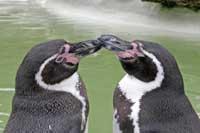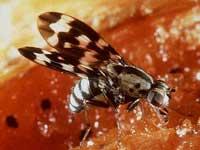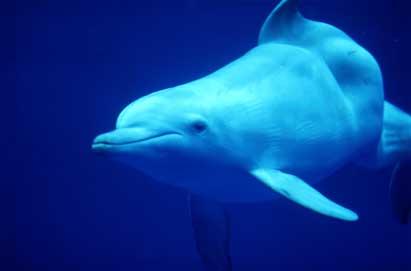Much more than homosexual penguins
2009/07/11 Galarraga Aiestaran, Ana - Elhuyar Zientzia
In addition to penguins, bonobos, dolphins and vinegar flies are known for their homosexual behavior. And people, of course. Other species, however, have been less studied or so many works have not been published. But that doesn't mean they don't have that kind of behavior. In fact, biologist Nathan Bailey has studied research that explains the homosexual behavior of animals and has found some example in most species, from worms to frogs or birds.

However, the biologist has warned that, although many researchers use the same name to describe certain behaviors, in most cases these are very different from one species to another and do not have the same meaning in one and the other. They have simplified too much, and that the question is far more complex than most have considered so far.
For example, male vinegar flies sometimes courge other males, which is due to the lack of a gene that allows them to differentiate both sexes.
In other species, however, genetic factors are less visible or less important. In dolphins, for example, sexual relationships between males serve to strengthen the group. In a kind of albatross, many females have female couples who are for a lifetime and grow together. In other species, these behaviors have no other objectives or consequences than pleasure. And in all these cases, the explanation is not that a gene is missing or overn.
Bailey also analyzes his influence on evolution. According to the scientists, these behaviors (courting, covering, or raising together, being of the same sex) are a consequence of natural selection, that is, throughout evolution they have arisen and have been maintained, by the defense of natural selection.
Evolutionary agent
Bailey, however, has gone further and has proposed that this type of behavior is not only the result of selection but also of evolution. In fact, relationships between individuals of the same sex can influence the structure of the group; for example, as a result of these relationships, some individuals are excluded from the group of breeding animals.
Bailey has also found other examples of how sex between animals of the same sex affects evolution. For brown lobsters, for example, it is harmful for others to cover. In this way, they flow the paracetilnitrile, avoiding that other males cover them. Therefore, in this case, although the covering between males generates paracetilnitrile, has opted for evolution.
What importance do genes have in this type of behavior against environmental factors? Bailey asks and does not answer. However, according to him, this knowledge would be very useful to better understand how sexual behaviors evolve between animals of the same sex and how they influence the evolution of other characteristics.
And when she talks about animals, Bailey also talks about people. Maybe that's the reason, maybe that's why the news about homosexual penguins have so much echo...
Published in Gara

Gai honi buruzko eduki gehiago
Elhuyarrek garatutako teknologia






